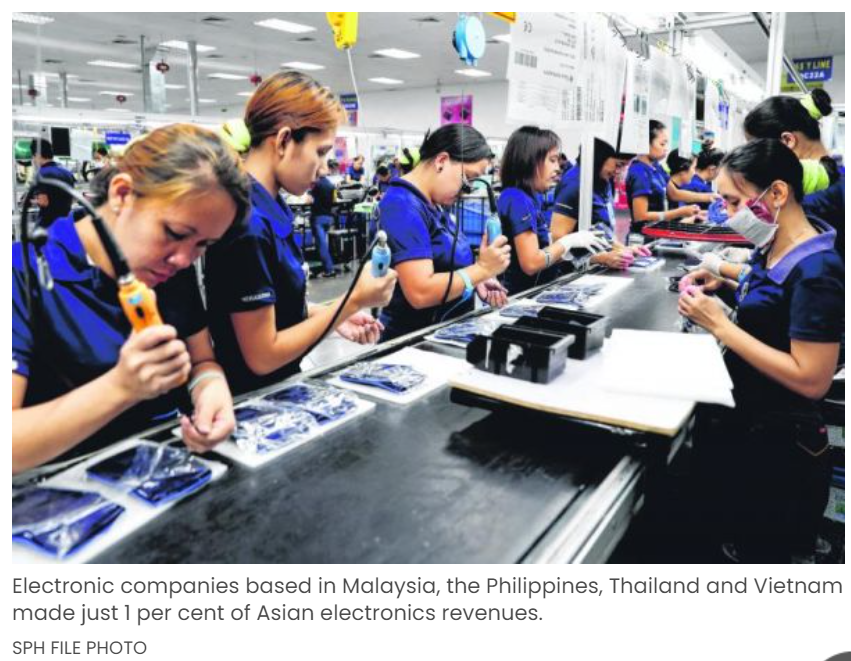Asean electronics companies still lag China in climbing global value chain: report
DESPITE ongoing supply-chain shifts into South-east Asia, the Asean economies that have been key beneficiaries will still be hard-pressed to compete with mainland China.
That’s as Malaysia, the Philippines, Thailand and Vietnam remain focused on low to mid-value-added segments, according to a new report from ANZ on Wednesday.
To be sure, the analysts found that “the Asean Quad has built a dominant presence in niche segments of the electronics industry”, such as office equipment in the Philippines, computers and radio equipment in Thailand, and telecom equipment in Vietnam.
Yet electronic companies based in these four countries made just 1 per cent of Asian electronics revenues.
In contrast, mainland China accounted for 23 per cent and Japan, South Korea and Taiwan together contributed 74 per cent.
Challenges in the Asean markets include an uncompetitive business environment in the Philippines; dependence on low-wage, low-skilled foreign workers in Malaysia; and relatively less developed infrastructure and connectivity in Vietnam, the analysts said.
They also noted a focus on lower-value activity in the global electronics value chain. For instance, close to half of electronics companies in the Philippines are engaged in low-value assembly and testing for electronics components, while the Malaysian electronics industry is heavily skewed towards electronics parts and semiconductors.
And Thailand has started to strategically move away from low-margin computer components, but is still the world’s second-largest hard disk drive exporter, after China.
“The Asean Quad has a lot to offer but China still has a competitive edge and has achieved economies of scale across electronics goods segments,” the ANZ team said.
Still, China’s rise up the value chain – into cutting-edge technology such as electric vehicles, artificial intelligence and robotics – could open up more room for other Asian economies to expand in low and medium-value-add activities, it added.
Meanwhile, Asian exports are expected to show more strength in the coming months, despite worsening Covid-19 outbreaks in the Europe and US markets.
“Supply bottlenecks in the West could be more important than demand,” Nomura economists Rob Subbaraman and Rebecca Wang said, even as the pandemic fuels demand for the protective gear and work-from-home electronics produced in Asia.
They suggested that Europe and US customers have had to turn to Asian supply chains, as delivery times have slowed in the West, unlike in the key Chinese market.
“Consistent with supply bottlenecks, pressure on manufacturing output prices is rising, most notably in the US, which has likely been exacerbated by US dollar depreciation,” they added in a note on Monday.
Still, momentum in Asian exports could slow in Q2 2021, they warned. With vaccines likely to contain the virus in the West by then, supply squeezes will ease, even while demand for protective gear and electronics cools.
Source: https://www.businesstimes.com.sg/asean-business/asean-electronics-companies-still-lag-china-in-climbing-global-value-chain-report


 Thailand
Thailand




